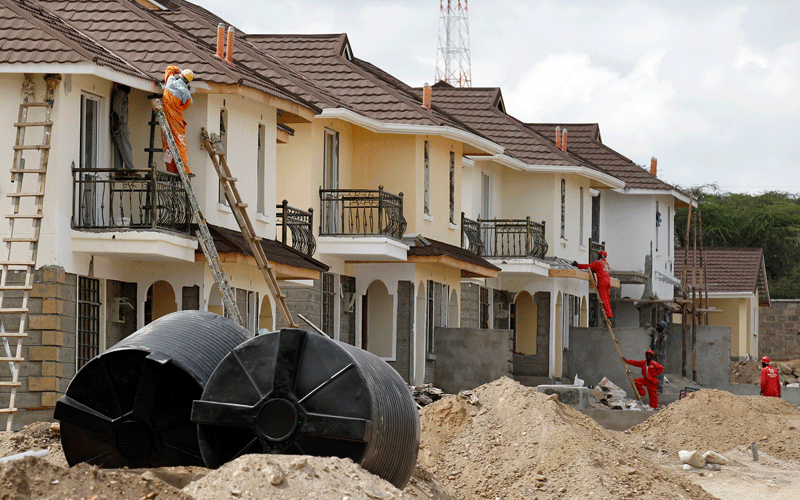Climate change set to impact on city housing Nairobi in 30 years

Nairobi may experience the biggest overall climate shift by 2050 according to a survey on 85 global cities, moving from a temperate humid warm summer to a tropical savanna wet summer climate
Climate change is increasingly becoming a threat to future urban development plans and is already threatening the building and construction industry.
A new report by apartment rentals platform, Nestpick.com the largest search engine for furnished apartments, predicts Nairobi will experience the biggest overall climate shift by 2050 out of 85 cities surveyed, moving from a Temperate Humid Warm Summer climate to a Tropical Savanna Wet Summer climate type, with a 2.31°C temperature increase. Tropical savannah climate has alternating drought and wet seasons.
“Increased temperatures in the city means town planners, architects and engineers will have to change the way the city buildings are designed and increase the cost of operation and maintenance.
Increased temperature in the city is going to affect the design, operations, and maintenance of even the transport system,” warns Mairura Omwenga, Chairman, Town, and County Planners Association of Kenya.
Omwenga says professionals in the built environment (town planners, architects, engineers) must now take active and leading role on climate change issues.
“Issues of pollution, building and construction, flooding are all matters that are within the domain of these professionals,” says the engineer and urban planner.
Pollution woes
Given rising levels of pollution (air, water and solids), the situation in Nairobi is going to be worse in 30 years if urgent and decisive measures are not taken to address the worsening situation.
“For example, with increased air pollution, the temperature of the city is going to rise to uncomfortable levels,” says Omwenga, a lecturer at the University of Nairobi.
According to the research conducted in 85 cities, Ho Chi Minh City, Vietnam, and Amsterdam, Netherlands are the second and third cities respectively potentially set to experience the greatest climate shift by 2050.
Bangkok, Thailand may experience the greatest climate change by 2050, with the highest risk of flooding from rising sea-levels and a temperature increase of 1.67°C.
Melbourne, Australia may experience the greatest water stress increase, where demand will be double the supply by 2040.
The drastic changes in climate over the next three decades calls for a paradigm shift in construction as the industry in developing nations is gaining momentum and is a development indicator as well as a major contributor to GDP.
Public awareness
“These results are eye-opening to our team at Nestpick, as a number of the cities, which will undergo the most drastic changes in climate over the next three decades such as Bangkok and Amsterdam are some of the most popular destinations with expats and contractors looking for opportunities abroad,” said Omer Kucukdere, CEO at Nestpick.
“Millennials, Gen Z and those even younger will increasingly need to keep climate change in mind when searching for the city they would like to eventually settle in,” he advises.
Omer calls for awareness creation among engineers, architects, quantity surveyors, construction managers and contractors in the industry.
It is also key to initiate early warning systems, incorporate rigorous risk assessments to determine infrastructure vulnerability levels.
Eric Muchunku, a Civil and Structural Engineer who works as a consultant for UN-Habitat in Nairobi says in future, we should expect unpredictable construction timelines, which mostly will result to cost overruns.
There is also going to be a greater need for stronger and lighter materials, which will not be affected easily by either higher or lower temperatures such as polystyrene, bamboo, geopolymer concrete (that uses waste materials like fly ash).
This, of course, will have a greater cost bearing on the developers and homeowners. Developers will also be forced to turn to green and re-usable materials with emphasis on natural lighting and natural ventilation systems.
Muchunku says climate change will also impact on current design manuals since most structural designs anticipate certain extreme weather situations. However, the extremes can be partly tackled by updating the manuals.
“Going forward, we expect to see less of stone masonry, which is not renewable and which provides less thermal insulation and increased use of other construction materials, which offers more thermal insulation,” he says.
On the positive note, as more climate change awareness is created, there will be a boom in business opportunities for suppliers of green building materials and technologies and industries that focus on reuse and recycling.
Omwenga says citizens should be encouraged to use technologies that minimise negative impacts on the environment such as use of solar power, public transport and fewer private car, more walking and cycling.
“Issues of climate change must now be taken to the public domain and grassroots and not remain in boardrooms and conferences,” says Omwenga.















